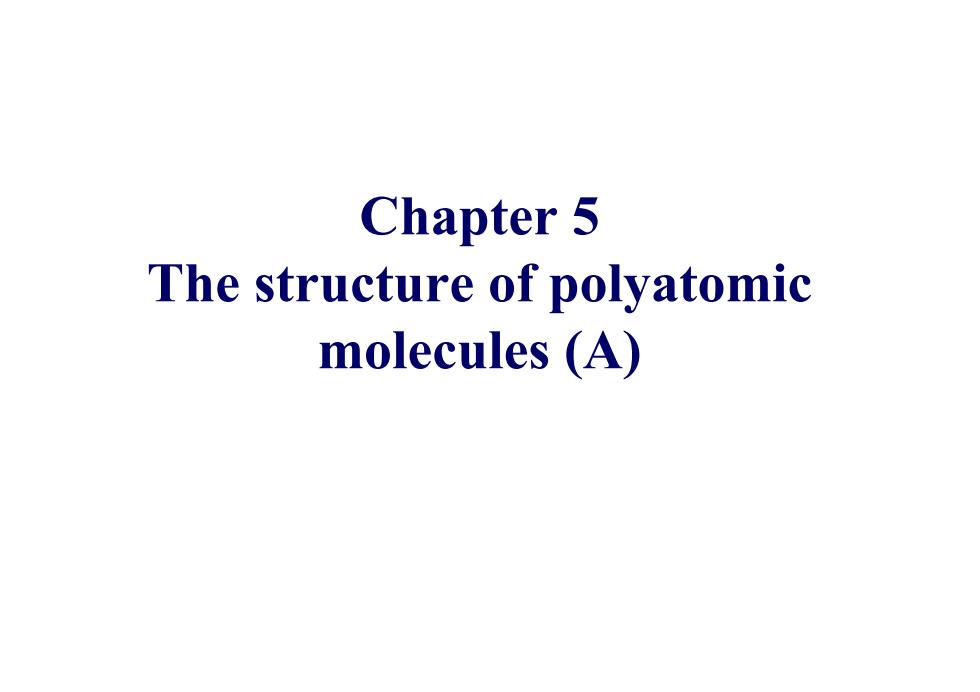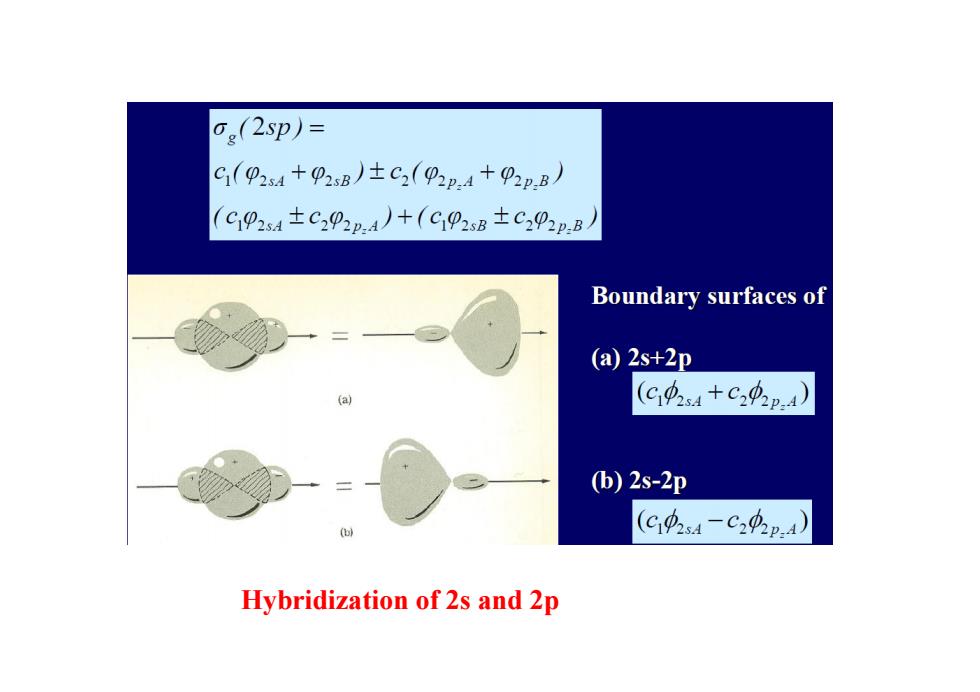
Chapter 5 The structure of polyatomic molecules (A)
Chapter 5 The structure of polyatomic molecules (A)

5.1 Theory of hybrid orbital and atomic orbital hybridization 1.Hybrid orbital theory---Proposed by Pauling in 1928 Chemical bonding theories MOLECULAR ORBITAL THEORY Valence electrons are delocalized Valence electrons spread over entire molecule VALENCE BOND THEORY Valence electrons are localized between atoms (or are lone pairs). Half-filled atomic orbitals overlap to form bonds
MOLECULAR ORBITAL THEORY • Valence electrons are delocalized • Valence electrons spread over entire molecule. Chemical bonding theories VALENCE BOND THEORY • Valence electrons are localized between atoms (or are lone pairs). • Half-filled atomic orbitals overlap to form bonds. §5.1 Theory of hybrid orbital and atomic orbital hybridization 1. Hybrid orbital theory ---Proposed by Pauling in 1928

Simplified MO diagram of diatomic molecules Og(2S)=(44+42B) n9 0g(2p)=(4p.A-4p,B) LUMO Og(2sp)= 20 9 C(p2s4+p2sB)±C2(02p.A-02p.B) HOMO (C024±C292p,4)+(C102sB干C292p.B) sp-hybridization 3 ,(2sp)= (C924±C202p4)-(C102,B干C92p,B) N2:KK(1oe)21o)(1π)(2o) The narrow energy gap between 2s and 2pz orbitals in a N atom also enables the interatomic interaction between 2s(N1)and 2pz(N2)!
The narrow energy gap between 2s and 2pz orbitals in a N atom also enables the interatomic interaction between 2s (N1) and 2pz(N2)!

6e(2p)= C1(92s4+P2sB)±C2(p2:4+P2p.B) (C102s4±C22p,A)+(C92sB±C202p,B Boundary surfaces of (a)2s+2p (C4s4+C20p.4) (b)2s-2p (C04-C24p.4) Hybridization of 2s and 2p
Hybridization of 2s and 2p

Central Themes of Valence Bond Theory Basic Principle of Valence Bond Theory:a covalent bond forms when the orbitals from two atoms overlap and a pair of electrons occupies the region between the nuclei. 1)Opposing spins of the electron pair. 2)Maximum overlap of bonding orbitals. 3)Hybridization of atomic orbitals. Pauling proposed that the valence atomic orbitals in the molecule are different from those in the isolated atoms.We call this Hybridization!
Central Themes of Valence Bond Theory 1) Opposing spins of the electron pair. 2) Maximum overlap of bonding orbitals. 3) Hybridization of atomic orbitals. Pauling proposed that the valence atomic orbitals in the molecule are different from those in the isolated atoms. We call this Hybridization! Basic Principle of Valence Bond Theory: a covalent bond forms when the orbitals from two atoms overlap and a pair of electrons occupies the region between the nuclei